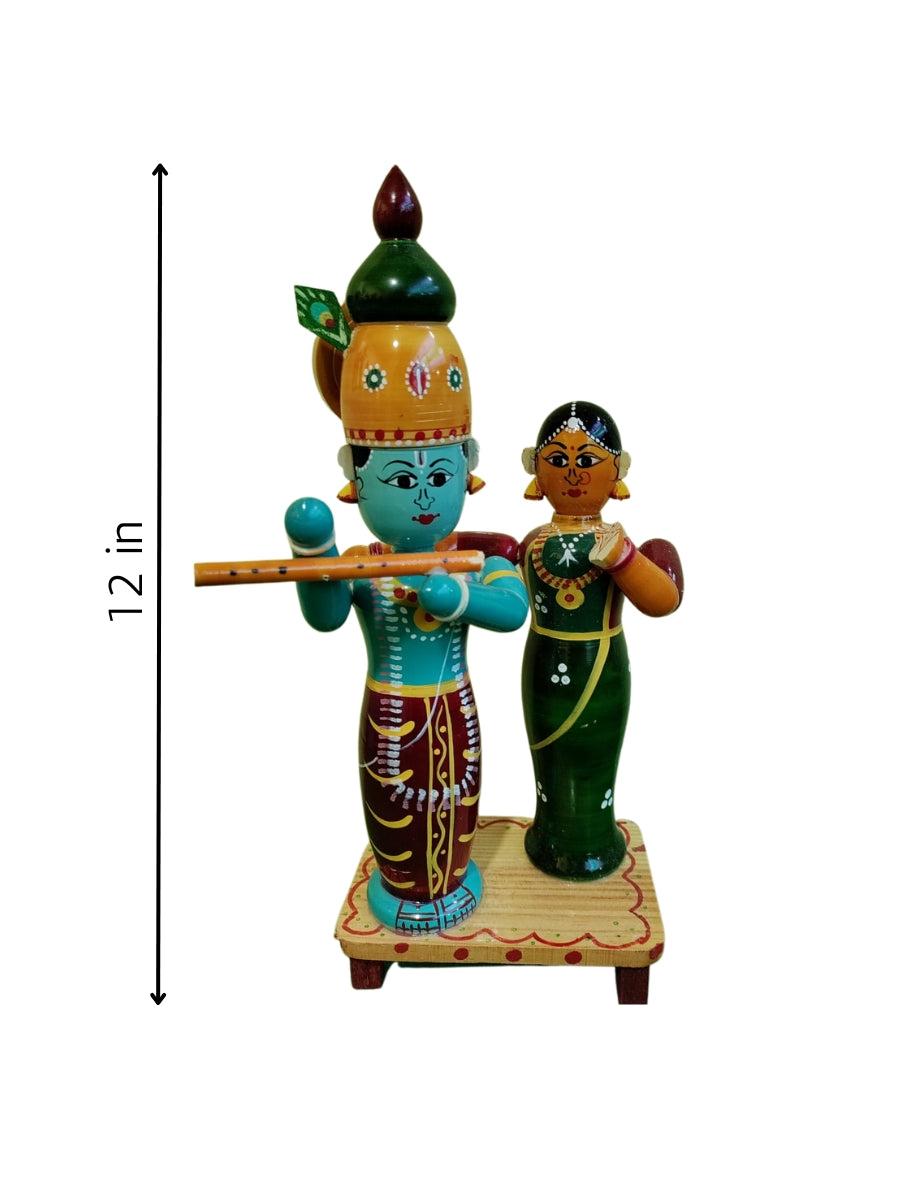Channapatna toys, often referred to as the "Land of Toys," are traditional wooden toys made in the town of Channapatna in Karnataka, India. Renowned for their vibrant colors, smooth finish, and simple yet elegant designs, these toys are a testament to the region’s rich cultural heritage and craftsmanship. Channapatna toys are not only a delight for children but also cherished by collectors and enthusiasts of traditional Indian crafts. With their eco-friendly and non-toxic nature, they embody the sustainable and artisanal values that have been passed down through generations.
Channapatna toys are characterized by a variety of themes that reflect both traditional and contemporary influences. Common themes include animals, birds, and traditional dolls, often depicting Indian cultural motifs and folklore. The toys range from spinning tops and rattles for infants to intricate figurines representing characters from Indian mythology, such as Krishna and Radha. In recent years, the themes have expanded to include modern concepts like puzzles, educational toys, and even decorative items that appeal to a global audience while still retaining their distinct, handcrafted appeal.
History
The origins of Channapatna toys date back to the reign of Tipu Sultan in the 18th century. Tipu Sultan, known for his patronage of arts and crafts, invited Persian artisans to teach the local craftsmen the art of making wooden toys. This led to the establishment of Channapatna as a prominent hub for toy-making. Over the centuries, the craft evolved with local artisans incorporating their own innovations while retaining the essence of the traditional methods taught by the Persians. Today, the craft is recognized as a Geographical Indication (GI) tagged product, protecting its unique identity and ensuring the preservation of this time-honored tradition.
The style of Channapatna toys is distinct, marked by their simple yet elegant forms, vibrant colors, and polished finish. The toys are typically made using a technique called lac-turnery, which involves turning the wood on a lathe and applying layers of lacquer for a glossy finish. The smooth, rounded shapes of these toys make them safe for children, and the designs are often minimalist yet expressive. Traditional designs are usually more ornate and feature intricate detailing, while contemporary styles may adopt cleaner lines and modern aesthetics, catering to a wider market.
Materials and Methods
The primary material used in Channapatna toys is a locally sourced wood called "Aale mara" (Wrightia tinctoria), known for its lightweight and durability. The process begins with selecting and seasoning the wood to prevent cracking. The wood is then turned on a lathe, shaped into the desired form, and sanded smooth. Artisans use natural dyes derived from turmeric, indigo, and other plant-based sources to color the toys, ensuring they are non-toxic and safe for children. The final step involves polishing the toys with a lacquer made from shellac, which gives them their signature glossy finish and enhances their durability.
Significance
Channapatna toys hold a significant place in India’s cultural and artisanal landscape. They are more than just playthings; they represent a sustainable craft that promotes traditional skills and supports local communities. The use of eco-friendly materials and non-toxic colors aligns with the growing global demand for sustainable and ethical products. Moreover, Channapatna toys symbolize the ingenuity of Indian artisans, combining functionality with artistic expression. They also serve as a reminder of the importance of preserving traditional crafts in the face of modern industrialization and mass production. Today, efforts to revive and promote Channapatna toys include government support, collaborations with designers, and integration into contemporary markets, ensuring that this cherished craft continues to thrive and inspire future generations.
FAQs
Can Channapatna toys be used for decorative purposes?
Yes, Channapatna toys are not only playthings but also serve as decorative items. Their vibrant colors and elegant designs make them popular for home decor, adding a touch of traditional Indian craftsmanship to any space.
How can one support the artisans of Channapatna toys?
Supporting Channapatna artisans can be done by purchasing their products, participating in workshops, and spreading awareness about the craft.
Show Less














